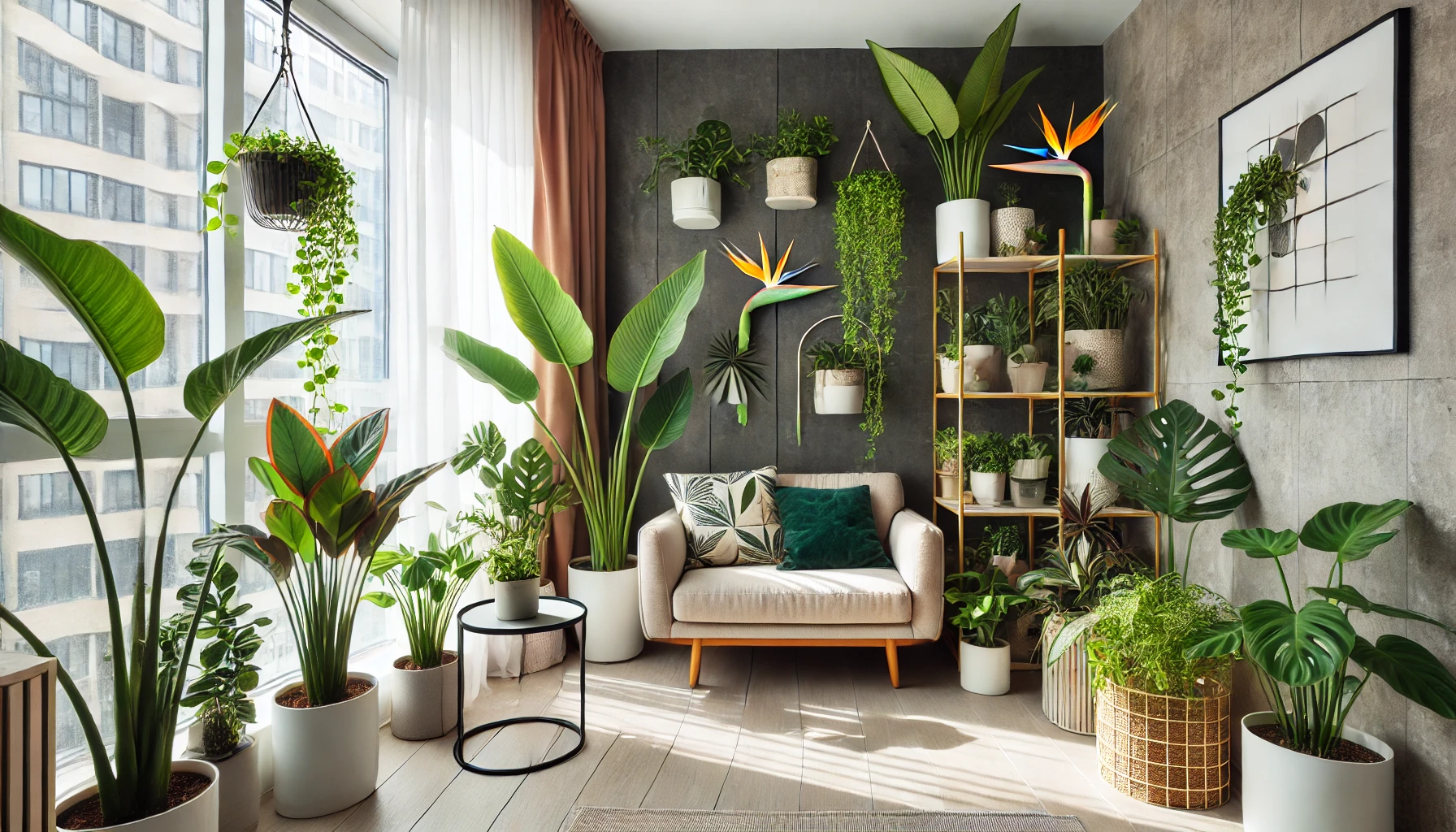Keeping exotic plants inside a small home or apartment may seem like a challenge, but with the right techniques, you can transform even the tiniest space into a lush green oasis. This guide will walk you through the essential tips for successfully growing exotic plants in small indoor spaces.
Why Exotic Plants Are a Great Choice for Indoor Gardening
Exotic plants, known for their unique shapes, vibrant colors, and tropical flair, can add personality and beauty to your home. Many varieties are well-suited to indoor environments and adapt well to containers. Their rarity and appeal make them perfect centerpieces in minimalist or modern décor.
Some popular exotic indoor plants include:
- Calathea Orbifolia
- Alocasia Polly
- Stromanthe Triostar
- Bird of Paradise (Strelitzia)
- Pitcher Plant (Nepenthes)
Choose the Right Plant for the Right Space
Before buying an exotic plant, assess your environment:
- How much light does the area receive?
- Is the space humid or dry?
- Is there enough air circulation?
- Do you have space for the plant to grow vertically or spread out horizontally?
Tip: If your apartment lacks direct sunlight, opt for shade-tolerant exotic plants like the ZZ plant (Zamioculcas zamiifolia) or a Peace Lily.
Light: A Key Factor in Plant Health
Light is one of the most critical factors for plant growth. Exotic plants often originate from tropical forests and are used to filtered sunlight.
- Low-light apartments: Choose plants that can thrive in indirect light or invest in grow lights to supplement natural lighting.
- South-facing windows: These get the most light and are perfect for sun-loving species like Bird of Paradise.
- Curtains or sheer blinds can help prevent sunburn on delicate leaves.
Watering: Balance Is Everything
Overwatering is a common mistake, especially in small apartments where air doesn’t circulate as well.
Watering Tips:
- Always check the soil before watering. It should be dry about an inch deep.
- Use well-draining pots with holes at the bottom.
- Try the “bottom watering” method by placing the pot in a tray of water and allowing it to absorb moisture from the base.
- Use filtered water for sensitive species like Calatheas.
Creating the Right Humidity
Many exotic plants love humidity, which can be a challenge in small, dry apartments.
Boost Humidity With:
- Humidifiers, especially during winter
- Misting, but avoid overdoing it
- Grouping plants together to create a micro-humid environment
- Placing pots on a tray with water and pebbles
Soil and Fertilization
The right soil mix can make or break your plant’s health. Exotic plants need well-aerated soil rich in organic matter.
Soil Tips:
- Use soil mixes tailored for tropical plants or create one with peat moss, perlite, and compost.
- Fertilize once a month during spring and summer using a balanced liquid fertilizer diluted to half strength.
- Avoid over-fertilization, which can lead to salt buildup in the soil.
Pots and Placement
In small spaces, your choice of pots can double as decor. Consider:
- Vertical planters or wall-mounted shelves
- Hanging baskets to save floor space
- Stackable planters or corner stands
Choose pots that complement your space’s aesthetic while allowing proper drainage.
Pest Prevention and Maintenance
Exotic plants can attract pests like spider mites and aphids, especially in enclosed spaces.
Preventative Measures:
- Wipe leaves regularly with a damp cloth
- Inspect for pests during watering
- Use natural insecticidal soap if needed
- Avoid overcrowding plants, which can reduce air circulation
How to Make Plants Thrive in Tight Spaces
- Rotate plants regularly so all sides get light.
- Prune to control size and encourage growth.
- Clean dead leaves and trim yellowing ones.
- Use mirrors to reflect light and visually expand your space.
- Keep your setup minimal and organized to reduce stress for both you and your plants.
When and How to Repot
Repotting is essential for long-term plant health. Signs that it’s time:
- Roots coming out of drainage holes
- Soil dries out quickly
- Stunted growth
Choose a pot just one size larger and gently loosen the roots before transferring.
Final Thoughts: Big Impact in Small Spaces
You don’t need a backyard or large balcony to enjoy the lush beauty of exotic plants. With proper care, the right environment, and a bit of creativity, you can fill your home with vibrant, healthy greenery that not only decorates your space but also boosts your mood and improves air quality.
